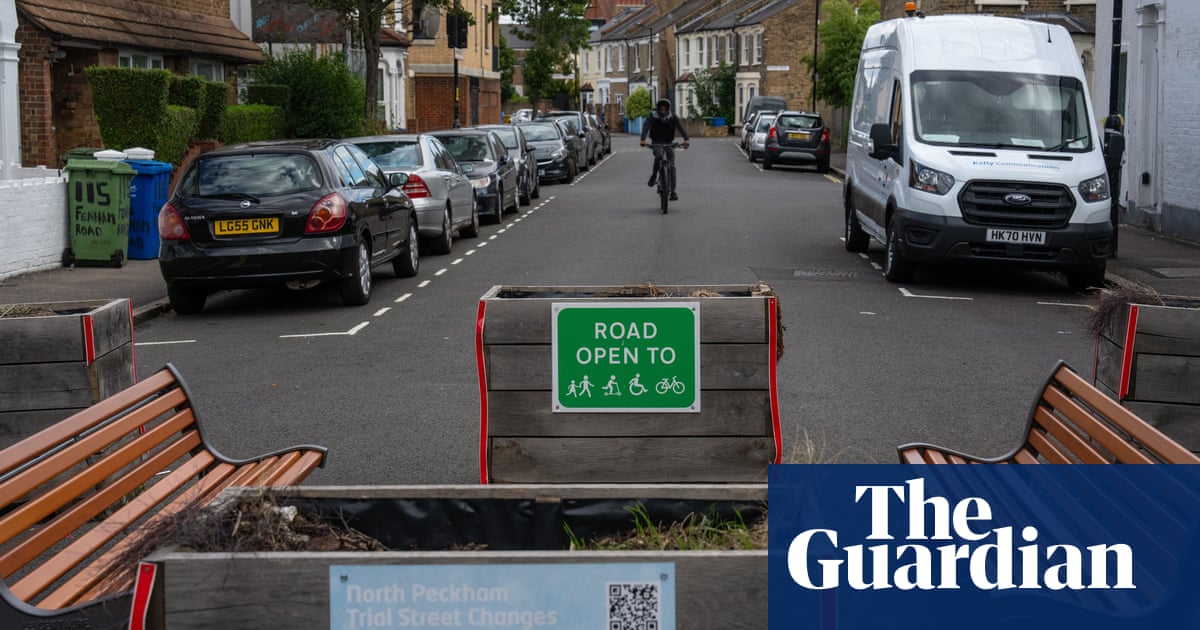
Afew weeks ago, the Daily Mail ran a lengthy feature exploring how “eco-crazy councils turned our streets into Gridlock Britain”. It begins with a heartrending and in no way manipulative story about how the traffic jams in the north London borough of Islington are upsetting a disabled 13-year-old boy.
Across the river in Lambeth, the council is celebrating a victory after the court of appeal declined to order a judicial review into three different low-traffic neighbourhoods (LTNs) across the borough. No matter: the local Tories have promised that, in the unlikely event they win next month’s council elections, they’ll scrap them all anyway.
Don’t imagine, though, that the row over LTNs is restricted to either inner London or the political right. In Oxford, Labour’s former shadow chancellor Anneliese Dodds has said she’s “increasingly concerned” about the rollout of such schemes, and called on Oxfordshire county council to pause them pending measures to prioritise buses. If the Lib Dem/Labour/Green coalition running the council is disappointed by this response from a Labour frontbencher, they can take some comfort from the fact that she was, at least, polite. Last summer one local communicated their views of the policy by setting fire to a planter.
Few issues in local politics spark the passion, not to mention hysteria, that has greeted the rise of low-traffic neighbourhoods. As well as the fires (there have been several), campaigns against them have included vandalism, doxxing and placards depicting council leaders as military dictators. Graffiti has appeared accusing councils of “abuse of power” or, inevitably, blaming Sadiq Khan, who has had nothing to do with any of this. Councillors and private campaigners alike have reported death threats.
All of which seems a pretty unhinged response to a policy intended to make streets a tiny bit nicer for those without cars. Low-traffic neighbourhoods, after all, aren’t doing anything as radical as, say, banning cars. They’re merely a gentle attempt – a new bollard here, a planter full of flowers there – to close off rat runs and keep through traffic to main roads. They’re nothing new, either: outer London boroughs including Waltham Forest and Kingston have had LTNs ever since Transport for London introduced its “mini-Hollands” scheme in 2014. Go to Walthamstow now, and you’ll find a glorious world of segregated cycle paths, quiet sidestreets and minor changes in road surface, intended to communicate that any motor vehicle passing through should be aware they’re in someone else’s space.
But they have expanded rather a lot of late. In May 2020, in the middle of lockdown with the need for social distancing at its height, the Department for Transport called on councils to reallocate road space from cars to cyclists and pedestrians. At the same time, transport secretary Grant Shapps announced the government’s £250m “emergency active travel fund”. About 50 councils created about 200 LTNs – often, thanks to the temporary and emergency nature of the interventions, without consulting the public.
Some of the benefits of LTNs – reducing air pollution, preventing journey planning apps from telling drivers to use your street as a shortcut – are pretty obvious. Others are not. For one thing, researchers have found that those living inside mini-Hollands are more active, with benefits for the health service. Past studies have found that those living on low-traffic streets are more likely to have friends locally, too. Between all that and halcyon images of kids playing in the street, you start to wonder why anyone wouldn’t want to live in an LTN.
Part of the problem, in fact, is that not everyone can. Diverting through traffic towards main roads is likely to mean more traffic on the main roads. In many cases that problem should, eventually, solve itself thanks to the magic of “traffic evaporation”: the phenomenon by which people switch to walking, cycling or public transport, because driving is just too big a pain in the arse. That, though, can take a while, and in the meantime traffic is going to get worse.
Another problem is that changes like this do create losers as well as winners – people who for one reason or another genuinely need to drive, and object to being sent, literally, all round the houses – and that it’s in the nature of things for them to shout a lot more loudly than those who benefit.
Perhaps the biggest issue, though, is that those pandemic LTNs were introduced in a tearing rush, as councils raced to grab a limited pot of funding. That meant a lack of consultation over temporary schemes (although councils are required to consult before making them permanent). What’s more, it would hardly be a surprise if under-resourced councils moving at speed failed to distinguish between decent schemes that would cause some temporary increase in traffic, and badly designed ones that would cause genuine, longer-term problems. A number of schemes introduced in 2020 have since been suspended.
For all that, though, it’s hard to shake the suspicion that at least some of the hysteria is just that people don’t like being inconvenienced. There are those who could walk or cycle, and whose lives would improve if they did. But they don’t want to. They want to drive, and they want to drive the most direct route, and until they can they’re going to shout at anyone trying to stop them. As well as stories of angry protests and vandalised planters, the past two years have brought footage of cars literally driving on the pavement to bypass an obstacle, rather than accepting that this route is now closed to them. Some drivers just assume their car is a god-given right, probably enshrined in Magna Carta.
They are, though, in the minority. A recent Centre for London poll found that only 12% of Londoners considered LTNs an important issue in the upcoming local elections; a 2021 survey conducted by Redfield and Wilton Strategies for the New Statesman found that twice as many people supported as opposed them. Like your car, in a traffic jam, LTNs are here to stay.
Jonn Elledge is former assistant editor of the New Statesman












